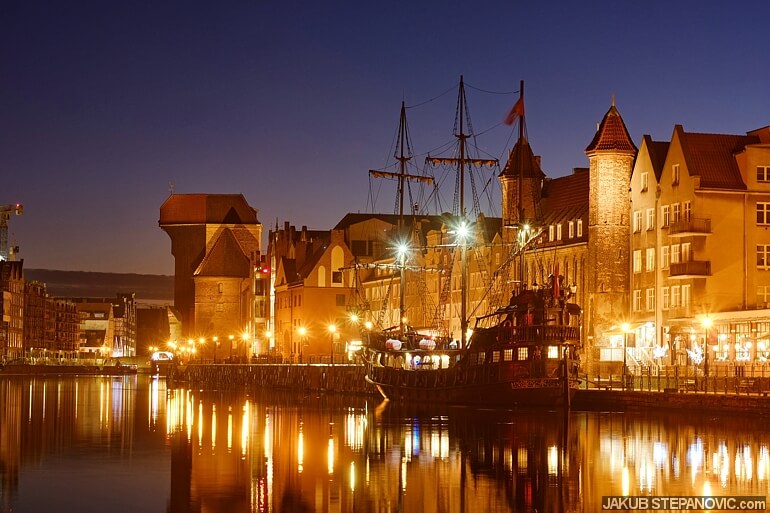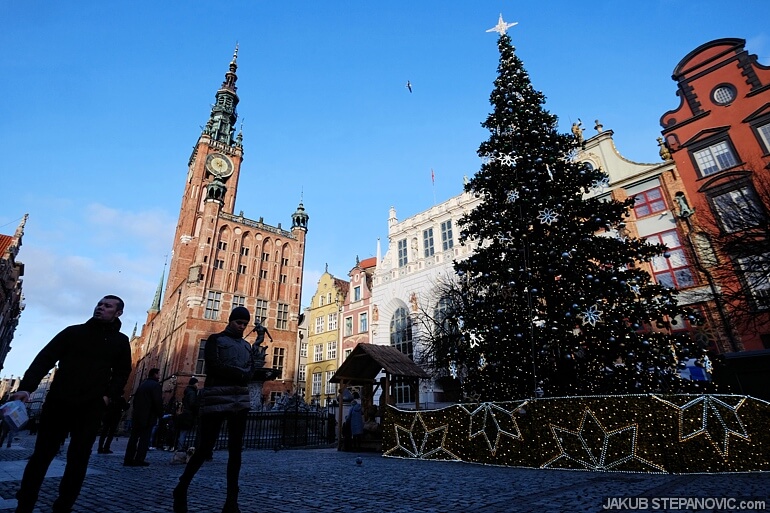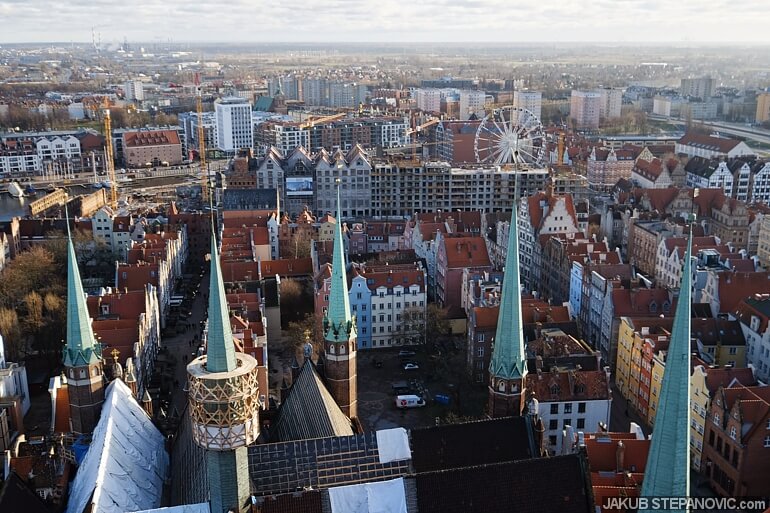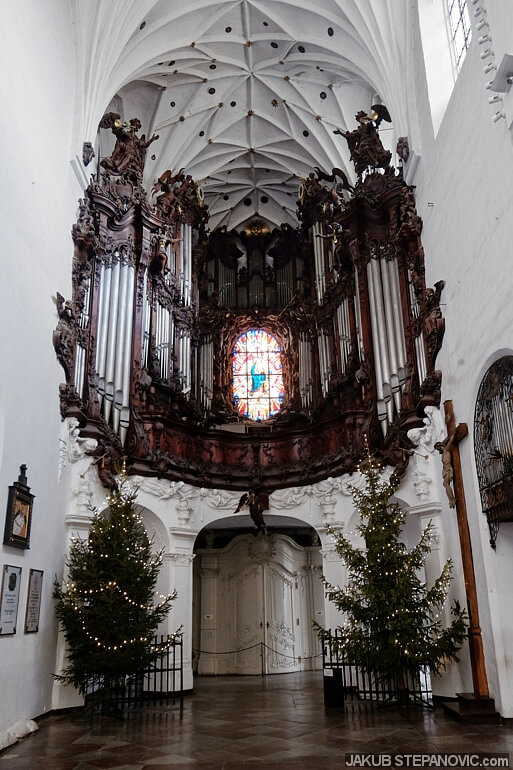
A brief outline of my trip to the Baltic border.
Gdansk was the last big item on the list of the Polish cities I wanted to see. And as it's possible to score return flights from Wroclaw for less than $15, it was just a matter of time until I pulled the trigger. It happened one afternoon last January – yeah, sometimes I'm a bit behind when it comes to publishing stories. Anyway, here's what I saw there.
It was already dark at the time of my arrival. Still, I took a stroll by the Motlawa riverfront to get a little of the city's atmosphere before checking into my accommodation.

The following day I started where I ended yesterday. The riverfront offers a neat mix of old and modern buildings, so while the temperatures were freezing, the views were worth it.

From the riverfront, it is just a few steps to another point of interest: the Długi Targ (long market), a square with an old town hall, and at that time, loads of Christmas decor:

Then I went to the tower of the Basilica of the Assumption of the Blessed Virgin Mary.
It has quite an exciting ascent because once you get above the basilica's ceiling, the interior opens, and only the staircase winds up. It's quite an unusual layout for a church spire, and it allows the visitors to fully appreciate the vast dimensions of this thing. As I learned later, the basilica is one of the world's largest brick churches.

And the views, well, I enjoyed them too:

From the historic structures to industrial neighborhoods and modern developments, each direction offers some interesting settings to look at.

The church itself is also neat, with many details to like.

This check-marked, I just browsed streets that I found interesting – my favorite method of exploring cities where I had never been before.

This technique eventually led me to the Gdańsk Shakespeare Theatre, built in 2008.

Later, I went to the Europejskie Centrum Solidarności, a good-sized museum/library devoted to Eastern Europe's anti-communist movements, mainly to the local union Solidarność.


It is located at the edge of the downtown, not too far from the next destination I wanted to visit — the Gdansk Shipyard district.

It's no secret that I enjoy walking through these temples of work anyway, but here, it also had historical context; the Solidarność union was formed in these Shipyards.

As usual, the production output has declined since globalization opened doors to cheaper labor elsewhere, but parts of the property are still used for shipbuilding. Some of the remaining buildings were rebuilt for a new purpose, such as club venues. It was cool to experience the blend of heavy industry and contemporary life.

I took some footage for my project Time here.

Later, the sun started to set, and I went off to see the last point I had prepared for the city center: the Second World War museum.

Out of the Polish contemporary architecture that I visited, this was among my favorites.

Finally, I got purposefully lost again and ended the day in the maze of the streets around the riverside.



On the last day, I went away from the downtown area towards the Oliwa neighborhood, where's a notable cathedral from the 16th century with a fascinating organ inside.
From Oliwa, it is about 4.5 km / 3 miles to the shores of the Baltic Sea — another goal for the day. One can navigate through a few pretty parks, so the walk was all right, and the seashore proved worthy the distance. It is a picturesque beach with good views:

On one side is Gdynia (another coastal city further west), and on the other is Gdansk's pier. That's where I went next.

Getting to the pier was surprisingly scenic: seashells on the shore, seagulls casting above it, as well as the horizon with large cargo ships. The views were partially lyrical, partially somehow apocalyptic. A coal-fired power station in the background poured thick smoke on the horizon, which shadowed the empty, freezing beach with children's playgrounds.

Behind the pier is a freight harbor, offering an opportunity to observe loading all sorts of goods on and off the ships. It was the last place I saw that day.

The sunlight was gone, but since the port is well-lit, it stood more colorful than it would be during the day. The lightning serves practical needs only, though; no spares for aesthetics.

Behind the lighthouse in the pic above is its predecessor from 1893 – sitting in complete darkness. I guess the city didn't see the touristic potential of the port; a pity. I had fun walking through, making it a pleasant ending to the nice trip.
If you liked this story, you might enjoy the other cities I visited in Poland, or other places. Thanks for reading!












Comments